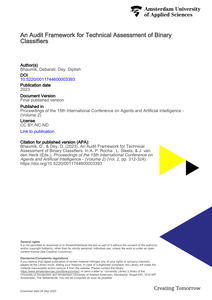BackgroundConfounding bias is a common concern in epidemiological research. Its presence is often determined by comparing exposure effects between univariable- and multivariable regression models, using an arbitrary threshold of a 10% difference to indicate confounding bias. However, many clinical researchers are not aware that the use of this change-in-estimate criterion may lead to wrong conclusions when applied to logistic regression coefficients. This is due to a statistical phenomenon called noncollapsibility, which manifests itself in logistic regression models. This paper aims to clarify the role of noncollapsibility in logistic regression and to provide guidance in determining the presence of confounding bias.MethodsA Monte Carlo simulation study was designed to uncover patterns of confounding bias and noncollapsibility effects in logistic regression. An empirical data example was used to illustrate the inability of the change-in-estimate criterion to distinguish confounding bias from noncollapsibility effects.ResultsThe simulation study showed that, depending on the sign and magnitude of the confounding bias and the noncollapsibility effect, the difference between the effect estimates from univariable- and multivariable regression models may underestimate or overestimate the magnitude of the confounding bias. Because of the noncollapsibility effect, multivariable regression analysis and inverse probability weighting provided different but valid estimates of the confounder-adjusted exposure effect. In our data example, confounding bias was underestimated by the change in estimate due to the presence of a noncollapsibility effect.ConclusionIn logistic regression, the difference between the univariable- and multivariable effect estimate might not only reflect confounding bias but also a noncollapsibility effect. Ideally, the set of confounders is determined at the study design phase and based on subject matter knowledge. To quantify confounding bias, one could compare the unadjusted exposure effect estimate and the estimate from an inverse probability weighted model.
MULTIFILE

Multilevel models using logistic regression (MLogRM) and random forest models (RFM) are increasingly deployed in industry for the purpose of binary classification. The European Commission’s proposed Artificial Intelligence Act (AIA) necessitates, under certain conditions, that application of such models is fair, transparent, and ethical, which consequently implies technical assessment of these models. This paper proposes and demonstrates an audit framework for technical assessment of RFMs and MLogRMs by focussing on model-, discrimination-, and transparency & explainability-related aspects. To measure these aspects 20 KPIs are proposed, which are paired to a traffic light risk assessment method. An open-source dataset is used to train a RFM and a MLogRM model and these KPIs are computed and compared with the traffic lights. The performance of popular explainability methods such as kernel- and tree-SHAP are assessed. The framework is expected to assist regulatory bodies in performing conformity assessments of binary classifiers and also benefits providers and users deploying such AI-systems to comply with the AIA.
DOCUMENT

Thirty to sixty per cent of older patients experience functional decline after hospitalisation, associated with an increase in dependence, readmission, nursing home placement and mortality. First step in prevention is the identification of patients at risk. The objective of this study is to develop and validate a prediction model to assess the risk of functional decline in older hospitalised patients.
DOCUMENT
